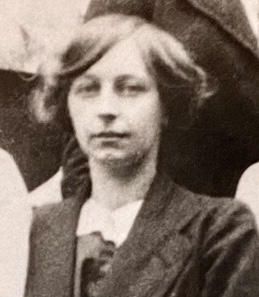First female BAUS member
Catherine Lewis (1882 - 1965) was a founder member of BAUS and the second woman to take the English FRCS examination.
 Emily Catherine Lewis, known as Catherine, was born on 29 May 1882, the youngest of four children. The family lived in Hampstead but maintained strong Cornish roots; her father James, was a Lieutenant in the Royal Navy and her older brother, Sir John Anthony Hawke, served as a Member of Parliament for St Ives.
Emily Catherine Lewis, known as Catherine, was born on 29 May 1882, the youngest of four children. The family lived in Hampstead but maintained strong Cornish roots; her father James, was a Lieutenant in the Royal Navy and her older brother, Sir John Anthony Hawke, served as a Member of Parliament for St Ives.
Catherine became an accomplished pianist and music teacher but, following her mother’s death in 1906, went to live with her older half-brother, Dr Edward DH Hawke, and decided to also become a doctor. She graduated from the London School of Medicine for Women (LSMW) in 1917, at the age of 35.
Lewis became the second female fellow of the Royal College of Surgeon of England in 1919 (the first, in 1911, was ENT surgeon E Davies-Colley: b1874 – d1934), which led, in rapid succession, to her appointment as the first woman general surgeon of a London teaching hospital.
Shy and reserved, she was described as "almost unapproachable" in her early career but, amongst her colleagues at The Royal Free, she successfully established herself as a “sound surgical opinion” with a meticulous operative skill and a thorough, considered approach to patient management.
She honed her Urological skills at St Peter’s Hospital for the Stone and, in another first for a women, was appointed as clinical assistant to Clifford Morson (1881 – 1975), second BAUS President and prime instigator of radiotherapy in urological cancers.
She wrote a short book titled “Urology in Women” which went to a second edition despite her colleagues warning her that this area was “of minor importance” and would “never prove financially profitable”.
In 1948, the year of the advent of the National Health Service, Lewis retired to Ely, Cambridgeshire. She turned her talents to the study of precious stones, alongside indulging in her first love of music. Although she had never married, Lewis was popular and maintained a close-knit circle of friends. Lewis developed obstruction, secondary to bowel carcinoma and died at the Royal Free Hospital in October 1965; the very place where she had endeavoured to put women in urology on the map.
The Museum Curator is grateful to Kassie Ball for her help in researching Miss Lewis
← Back to Famous Clinicians Room